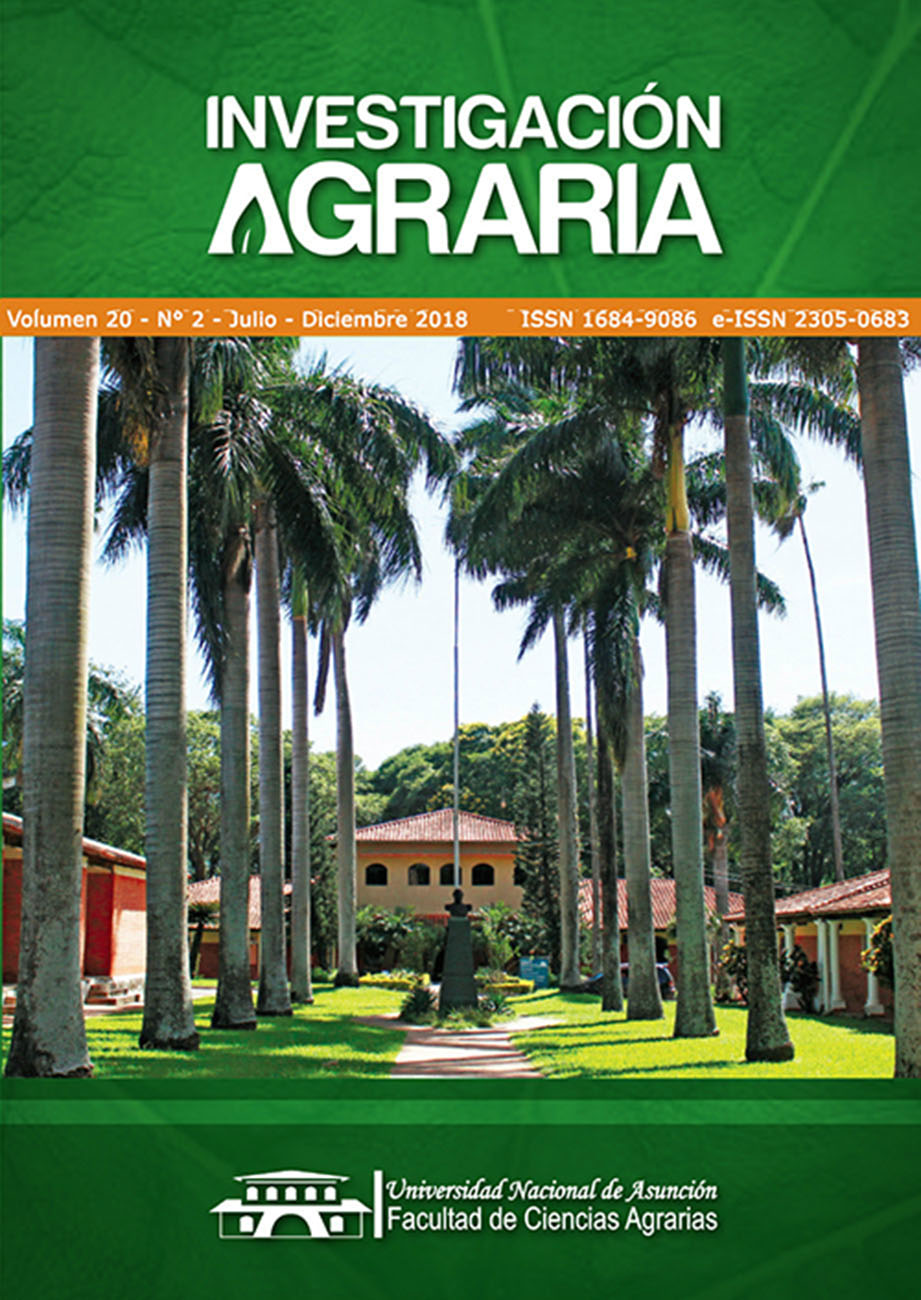Intellectual property and patents on medicinal uses and traditional knowledge
DOI:
https://doi.org/10.18004/investig.agrar.2018.diciembre.91-99%20Keywords:
Traditional knowledge, Guarani ethnical groups, Medicinal plants, Patents, Intelectual Properties rights, EthnobotanyAbstract
This article analyzes the traditional knowledge about the alleged medicinal properties of plants and their uses as part of the Commons having the protection of domestic law and international law. The uses of these plants are considered by ethnic indigenous Mbya Guarani and Paĩ Tavyterã of the Western region of Paraguay. Articles published in scientific journals in the region and in high-impact scientific journals are used as basically bibliographic research. Likewise, it was taken in advantage information contained in patent Patenscope databases. On the exploitation of these secondary data, it was taken into consideration, the result of ethnographic work in the region. Over 86 selected plants and considering the species in the investigation were registered 4,668 patents applied for and 2,715 granted patents; The National Directorate of Intellectual Property (Dirección Nacional de Propiedad Intelectual DINAPI) does not register patent applications from residents. It was found that large pharmaceutical corporations and food industry do not recognize the fair and equitable compensation established in treaties. To this extent it can be assumed that these corporations respond to the logic of accumulation by dispossession of common goods.Downloads
Metrics
References
Céspedes de Zárate, CI; Fogel, R; Soria Rey, N; Valdez, S. 2016. Etnomedicina de los pueblos Mbya Guaraní y Paĩ Tavyterã: usos de 86 plantas medicinales. Asunción, Paraguay: AGR.
Córdoba, MJ. 2014. Propiedad Intelectual y Acervo Común: la naturaleza mixta del derecho de autor desde la perspectiva del bien común. Dikaion 23(2):223-250.
Endere, M; Mariano, M. 2013. Los conocimientos Tradicionales y los desafíos de su protección Legal en Argentina. Quinto Sol 17(2):1-20.
Ferreira, ME; Nakayama, H; Rojas de Arias, A; Schinini, A; Vera de Bilbao, N; Serna, E; Lagoutte, D; Fournet, A. 2007. Effects of canthin-6-one alkaloids from Zanthoxylum chiloperone on Trypanosoma cruzi-infected mice. Journal of Ethnopharmacology 109:258-263.
Filoche, G; Pinton, F. 2014. Who Owns Guaraná? Legal Strategies, Development Policies and Agricultural Practices in Brazilian Amazonia. Journal of Agrarian Change 14(3):380-399.
Fogel, R. 2010. Los pueblos guaraníes en la formación de la nación paraguaya. Asuncion, Paraguay: CERI.
Gómez, L. 2013. Protección de la Tradición. Los derechos no tradicionales de la Propiedad Intelectual. Comité Intergubernamental de recursos genéticos, conocimientos tradicionales y folclore de la OMPI. Revista de la Propiedad Inmaterial 17:93-111.
Louwaars, N. 2012. Seed science in the 21st century: rights that scientists have to deal with. Seed Science Research 22:9-14.
Organización de las Naciones Unidas (ONU). 1992. Convenio sobre la diversidad Biológica. Rio de Janeiro, Brasil.
Organización de las Naciones Unidas (ONU). 2010. Protocolo de Nagoya sobre Acceso a los recursos genéticos y participación justa y equitativa en los beneficios que se deriven de su utilización al Convenio sobre la Diversidad Biológica. Nagoya, Japón.
Ostrom, E. 2012. El Gobierno de los Bienes Comunes. México: FCE/UNAM/IIS.
Ribadeneira, SM. 2014. Protocolo de Nagoya sobre acceso a los recursos genéticos y participación justa y equitativa en los beneficios que se deriven de su utilización, cuatro retos para su implementación en países en América Latina y el Caribe. OPER, 15:127-146.
Ruiz, M. 2001. Protección de conocimientos, innovaciones y prácticas indígenas en el Perú. Debate Agrario: Análisis y alternativas 33:73-89.
Suárez, A; Centeno, Y; Noa, D; Izquierdo, E. 2006. Apuntes sobre la protección de los conocimientos tradicionales. El profesional de la información 15(1):44-48.
Stiglitz, J. 1995. Economía en el sector Público. España, Barcelona: Editorial Antonio Boch.
Thouvenel, C; Gantier, JC; Duret, P; Fourneau, C; Hocquemiller, R; Ferreira, ME; Fournet, A. 2003. Antifugal Compounds from Zanthoxylum chiloperone var. angustifolium. Phytotherapy Research 17: 678-680.
World Intellectual Property Organization (WIPO). 2002. Intergovernmental Committee on Intellectual Property and Genetic Resources, Traditional Knowledge and Folklore. Ginebra, Suiza: WIPO.
Zamudio, T. 2012. Los conocimientos tradicionales y el régimen legal de acceso y distribución de beneficios. Revista Derecho PUCP 69:259-279.
Downloads
Published
How to Cite
Issue
Section
License

This work is licensed under a Creative Commons Attribution 4.0 International License.
All content in this journal is under Creative Commons Attribution License.









 All content in this journal is under
All content in this journal is under 